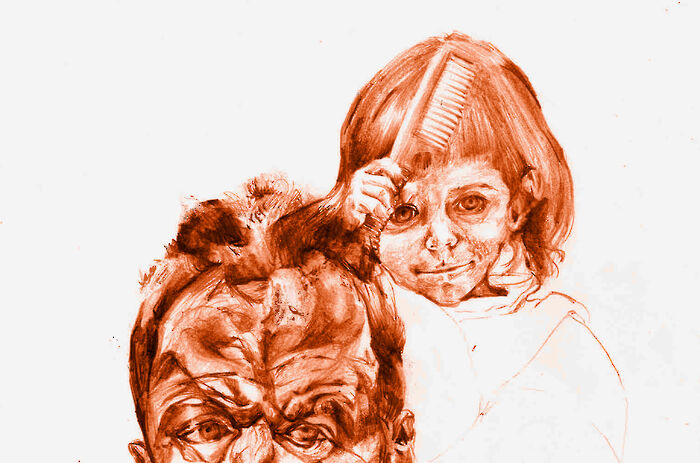Sensual/Virtual – a new theme for the Fitzwilliam
Peter Hunt explores the Fitz’s first annual theme, coinciding with the reopening of its main gallery

For the past two years, should one have entered through the towering Grecian portico of the Fitzwilliam Museum, one would have perhaps been disappointed. The mighty Corinthian columns on the exterior would have given way to slender metallic poles supporting the scaffolding inside, reflecting the costly restoration project that has taken place to restore the classical grandeur of the Great Gallery.
But those days have now passed and, in a reception that sought to befit the magnificence of this restoration, the Vice-Chancellor, dwarfed by Van Dyke’s portrait of Charles I that he stood before, declared the Gallery open.
And what more apt theme to fit this richly refurbished gallery, but an exploration of how artists have sought to convey sensory information through virtual media, such as paint or print.
The sensual connection between artist and visitor is achieved through the stroke of the pen rather than brush
Within the Great Gallery itself, the rural landscapes of Gainsborough sit alongside the pastoral portraits of Stubbs, conveying to the visitor an appreciation of these artists’ love for rural society, despite their bucolic world being now largely lost under the edifice of time and only accessible to the visitor through such artistic media.
The theme broadens beyond the traditional forms of artwork with literary ‘art’ being featured frequently as well, most visibly with an early copy of Shelley’s Adonais situated in a cabinet adjacent to these painted works of pastoral beauty. In contrast to these, Adonais powerfully conveys the deep emotional anguish of Shelley at the death of Keats, and reflects the range of virtual media displayed in the gallery, with this sensual connection between artist and visitor achieved through the stroke of the pen rather than brush.

This theme extends beyond the Great Gallery into other areas of the museum, with other smaller rooms containing works in other media, such as printed nudes by Rembrandt in Gallery XVI, while Gallery VII holds some older works, such as those by the French Baroque artist Nicolas Poussin.
Poussin’s artistic method is revealed by the museum’s detailed recreation of his ‘machine’: a wooden cuboidal box with small figurines in it and a small opening through which to view them, rather akin to a nativity scene in a village church. This unusual arrangement enabled Poussin to picture mentally his scenes, and to understand better how to convey senses of depth, colour and indeed the figures’ emotion to the reviewer of his completed work.
The gallery itself was a masterpiece of architectural art
I experienced this sense of artistic connection quite unexpectedly, when I had the privilege of attending the exhibition’s opening last week, and found myself staring closely at a Titian, also held in Gallery VII. As I worked my way along the painting, analysing its skilful minute detail, I noticed an older lady standing quite far behind me, yet still appreciating the same masterpiece. Not wishing to spoil her view, I took some steps back to appreciate the work from afar, and to look at it from her perspective in case there was something that I had missed.
This visitor understood that the painting was not the sole piece of artistic work in the gallery, but that the gallery itself was a masterpiece of architectural art. The classical opulence of gallery complimented and contrasted aspects of the work and compelled the visitor to view these works of art, however familiar they may be, in a new light and to gain from them a greater appreciation of the senses which they sought to convey.
Well worth a visit.
 News / Deborah Prentice named highest-paid Russell Group VC6 January 2025
News / Deborah Prentice named highest-paid Russell Group VC6 January 2025 Fashion / The decline of Depop and the rise of Vinted5 January 2025
Fashion / The decline of Depop and the rise of Vinted5 January 2025 News / News in Brief: SU says sayonara to sabbs (again) and Cunk comes to Cambridge5 January 2025
News / News in Brief: SU says sayonara to sabbs (again) and Cunk comes to Cambridge5 January 2025 Lifestyle / Blind Date: ‘He gave me a good strategy for stealing from formals’5 January 2025
Lifestyle / Blind Date: ‘He gave me a good strategy for stealing from formals’5 January 2025 Sport / Cambridge’s forgotten winter sports traditions6 January 2025
Sport / Cambridge’s forgotten winter sports traditions6 January 2025






